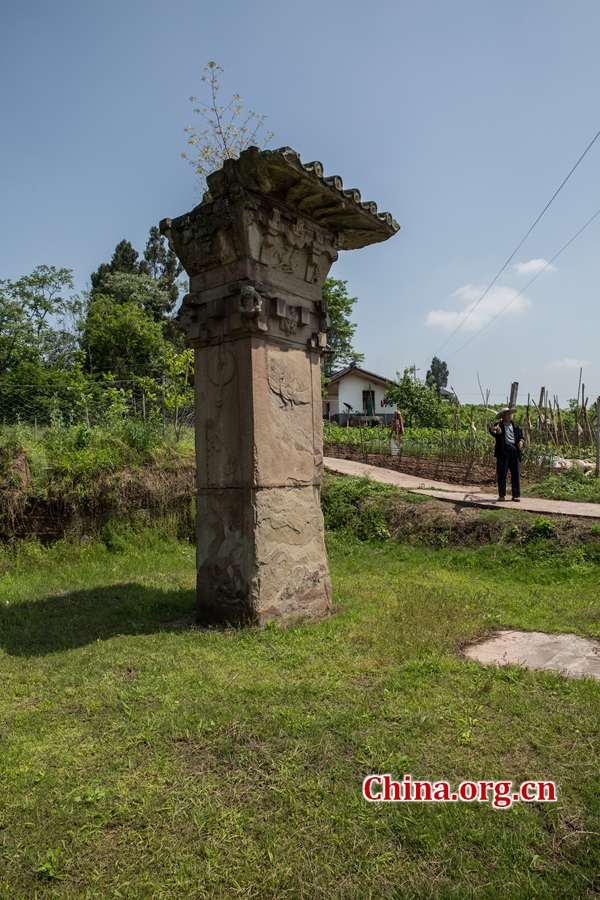千年蜀地访汉阙
Que towers record thousand-year-old stories
编者按:【阙】古代宫殿祠庙和陵墓前的高建筑物。通常左右各一,简称高台,台上起楼观。以两阙之间有空缺,故名阙或双阙。有的用石雕砌而成作为记官爵、功绩和装饰之用。也有大阙旁更建小阙的,称“子母阙”。
——《辞海》
“汉代遗物中墓饰碑阙实为最要。……石阙石碑,盛施雕饰以点缀墓门以外各部。遗品丰富,雕工精美,堪称当时艺术界之代表。”
——梁思成《中国雕塑史》
四川渠县是国内遗存汉代阙最多的地区,被誉为“汉阙之乡”。现保存下来的有六处:蒲家湾无铭阙(单阙),王家坪无铭阙(单阙),沈府君阙(双阙),冯焕阙(单阙),赵家村西无铭阙(单阙),赵家村东无铭阙(单阙)。(图文/姚平)
Editor's note: A que is a stone carving erected in front of a temple or tomb, serving as a ceremonial tower in traditional Chinese architecture. The que towers may appear in pairs or on each side of the road leading to the temple or tomb. They were usually carved with inscriptions recording the owners' official rank and achievements. Some however, were only engraved with patterns to serve as decorative pillars. The use of que reached its peak in the Han Dynasty (206 BC-220 AD), and most of the 2,000-year-old que are preserved in Quxian county, Sichuan province.
蒲家湾无铭阙(单阙)
Pujiawan Que in Quxian county, Sichuan province. There are altogether six que towers remaining in the county. (Photo by Yao Ping/China.org.cn)
 0
0 





Go to Forum >>0 Comment(s)